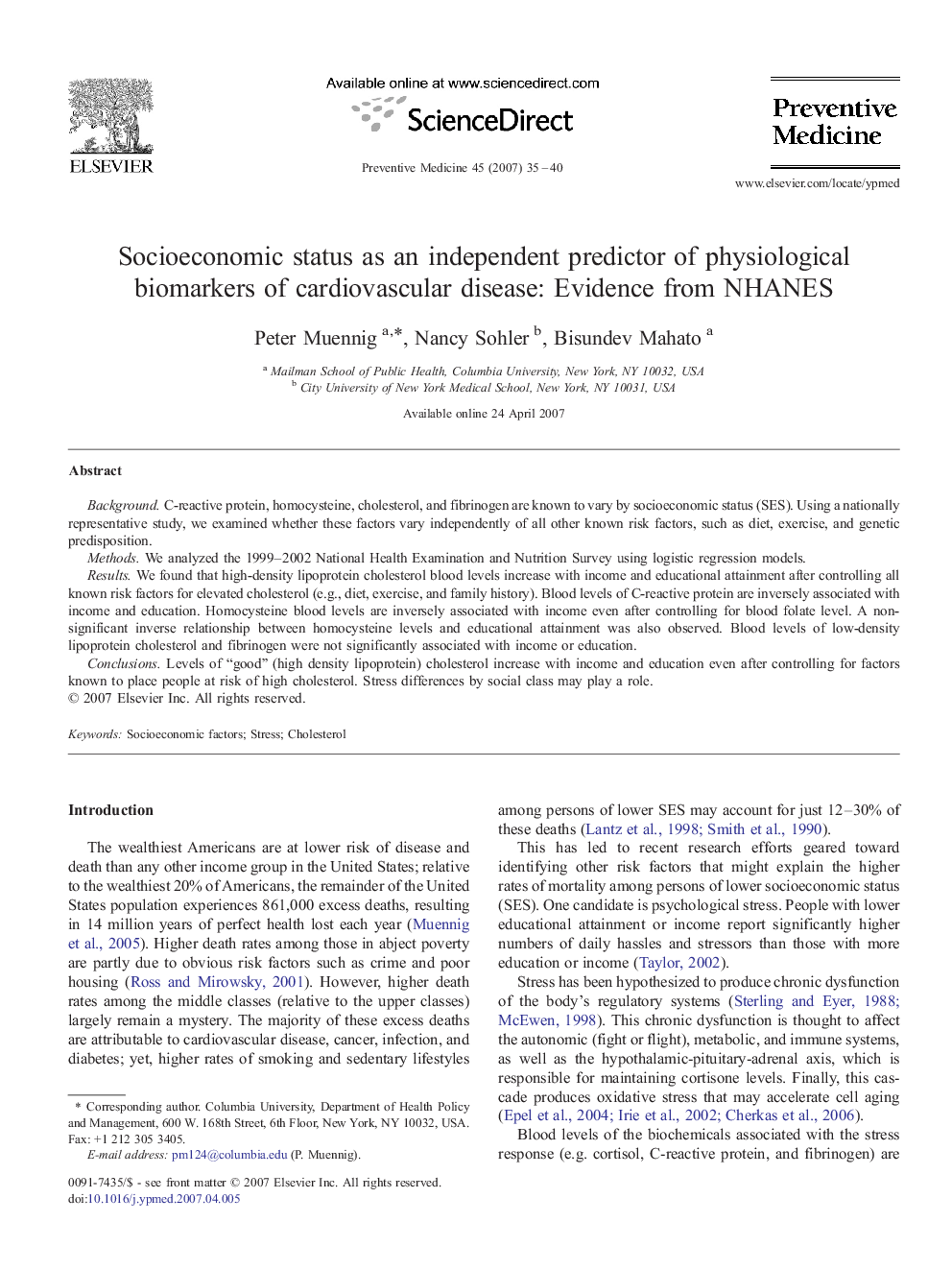| Article ID | Journal | Published Year | Pages | File Type |
|---|---|---|---|---|
| 3101648 | Preventive Medicine | 2007 | 6 Pages |
BackgroundC-reactive protein, homocysteine, cholesterol, and fibrinogen are known to vary by socioeconomic status (SES). Using a nationally representative study, we examined whether these factors vary independently of all other known risk factors, such as diet, exercise, and genetic predisposition.MethodsWe analyzed the 1999–2002 National Health Examination and Nutrition Survey using logistic regression models.ResultsWe found that high-density lipoprotein cholesterol blood levels increase with income and educational attainment after controlling all known risk factors for elevated cholesterol (e.g., diet, exercise, and family history). Blood levels of C-reactive protein are inversely associated with income and education. Homocysteine blood levels are inversely associated with income even after controlling for blood folate level. A non-significant inverse relationship between homocysteine levels and educational attainment was also observed. Blood levels of low-density lipoprotein cholesterol and fibrinogen were not significantly associated with income or education.ConclusionsLevels of “good” (high density lipoprotein) cholesterol increase with income and education even after controlling for factors known to place people at risk of high cholesterol. Stress differences by social class may play a role.
